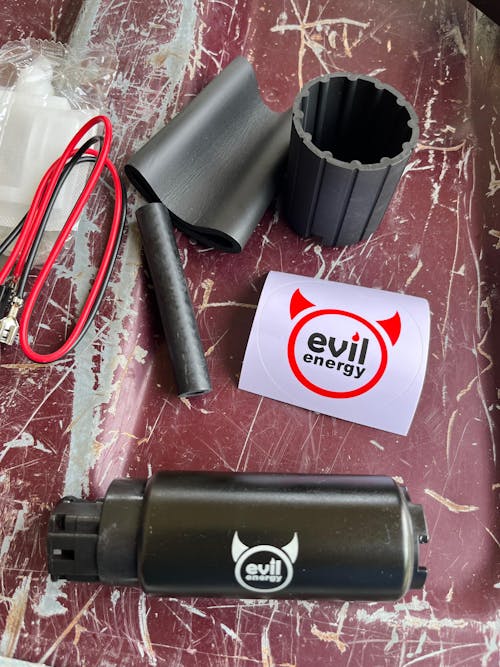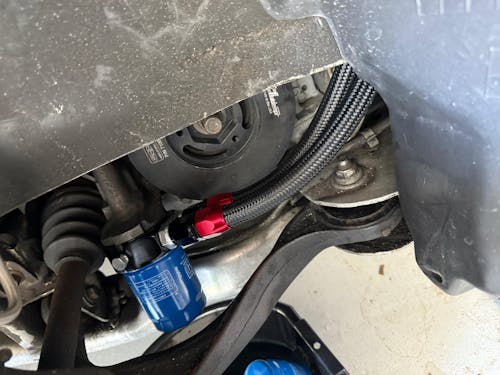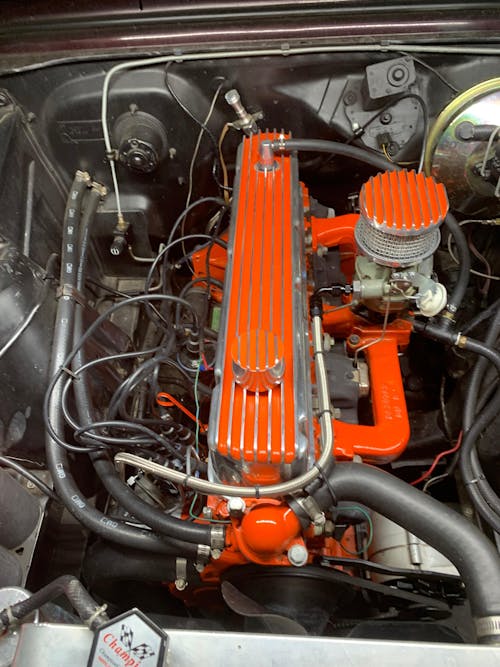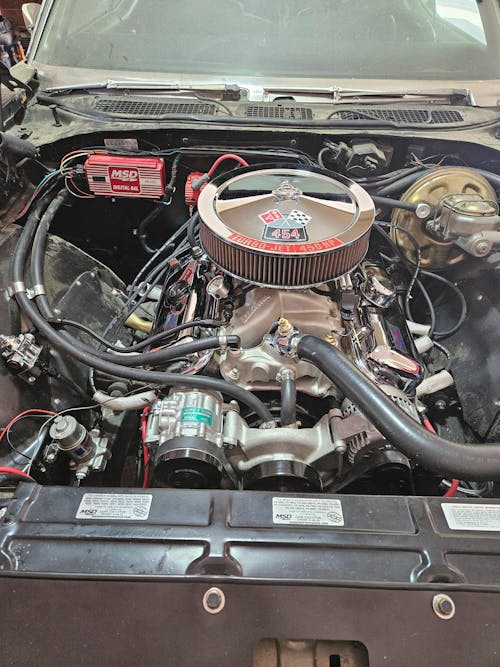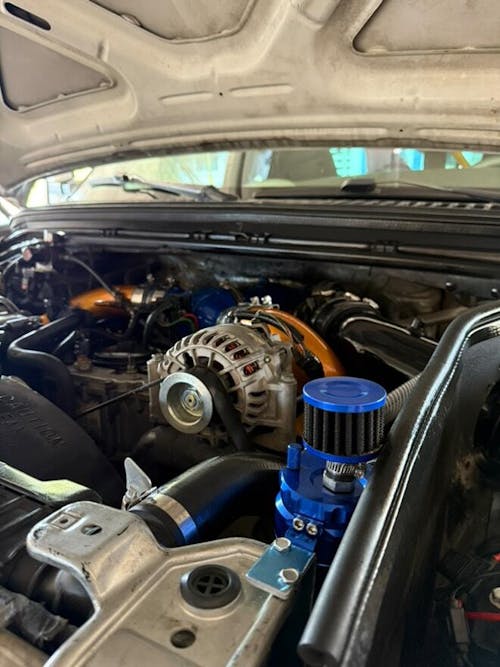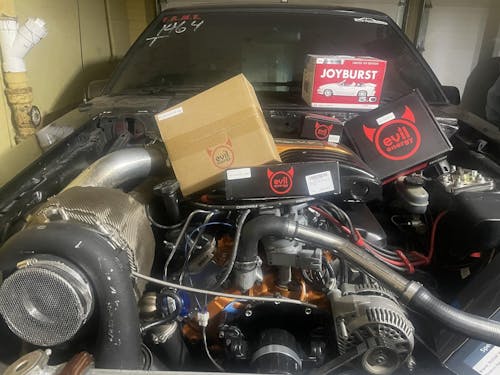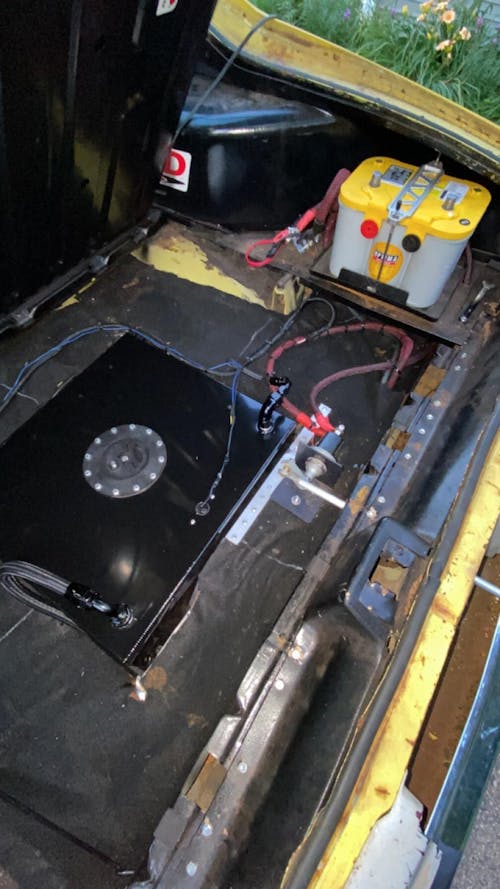Carburetor vs. Fuel Injection: What's the Difference and Which Is Better?
If you're diving into engine upgrades, tuning your first project car, or just curious about how your vehicle delivers fuel, you’ve probably heard the debate: carburetor vs. fuel injection. Which one’s better? Which one suits your building? And what exactly makes them different?
Both systems do the same basic job—mixing fuel with air to power your engine—but they go about it in very different ways. Carburetors rely on old-school mechanical precision and a bit of air pressure magic, while fuel injection uses computers and sensors to get the mix just right.
In this blog, we’ll break it all down for you:
-
What carburetors and fuel injection systems actually do
-
Where each is commonly used (and why)
-
The pros and cons of each system
-
Key differences in performance, efficiency, and maintenance
-
How to choose what’s best for your needs: daily driving, racing, or restoration
Whether you're into classic V8s, fuel-sipping daily drivers, or high-performance builds, understanding your fuel delivery system is key. Let’s explore the old-school vs modern tech battle—and help you decide which side you're on.
What Is a Carburetor?
A carburetor is a mechanical device that blends air and fuel for internal combustion engines. Before modern fuel injection systems took over, carburetors were the standard method of fuel delivery in most gasoline-powered vehicles.
How a Carburetor Works
Think of a carburetor like a mixing chef for your engine. Its job is to take in air, add just the right amount of fuel, mix them together, and send the mixture into the engine so it can burn and make power.
Here’s how it works, step by step:
-
Air comes in through an air filter (like a mask that keeps dirt out).
-
It flows through a narrow part of the carburetor called a venturi. As the air speeds up in this tight space, the pressure drops, just like how a windy tunnel feels lower pressure inside.
-
That drop in pressure 'pulls' fuel out of a little fuel tank inside the carburetor (called a float chamber), spraying it into the moving air like a mist.
-
The air + fuel mixture then travels into the engine and is burned to create power.
Example: Imagine blowing hard through a straw across the top of a soda bottle—if you blow fast enough, some of the soda might spray up. That’s kind of what happens inside a carburetor, except with gasoline and air.

When you step on the gas pedal, you're not directly adding more fuel. You're actually opening a flap to let in more air. As more air flows in, the carburetor automatically adds more fuel to keep the mix balanced.
There are also different types of carburetors depending on how air flows through them:
-
Updraft: air comes in from below
-
Downdraft: air enters from the top (most common in older American cars)
-
Sidedraft: air comes in from the side (common in European sports cars)
Fun fact: Many older cars, motorcycles, and even lawn mowers still use carburetors. They're simple, mechanical, and don't need electronics to work.

Where You’ll Still Find Carburetors
Even though carburetors aren’t common in new cars anymore, they’re still very much alive in the world of older vehicles, small engines, and racing.
Here are some places you’ll still find them today:
-
Classic and Muscle Cars — Think old-school V8s like the Chevy 350 or Ford 302. Carburetors were the heart of these engines and still are for many collectors and restorers.
-
Motorcycles and ATVs — Many smaller bikes and off-road machines use carburetors because they’re lightweight and simple.
-
Lawn Mowers, Snow Blowers, Generators — Your backyard tools might be carbureted and you didn’t even know it!
-
Race Cars — Especially drag racing and oval track builds. Carburetors are easier to tune for max power on the fly, and racers love that.
Why do people still love them? Because they’re mechanical, simple, and hands-on. For folks who enjoy tuning by feel and sound—not by sensors and software—carburetors are still king.

Carburetor Advantages and Disadvantages
Why Carburetors Still Have Fans
-
Easy to tune manually — A screwdriver and some patience is all you need.
-
Low cost — Plenty of affordable options and replacement parts.
-
Great throttle response — Especially for drag or street racing.
-
Perfect for simple or remote setups — No need for wires or ECUs.
Things to Keep in Mind
-
Not as fuel-efficient — Fuel injection is better at saving gas.
-
Cold starts can be rough — Especially in winter or damp weather.
-
Needs maintenance — You’ll need to clean jets and adjust things from time to time.
-
Can be unpredictable — Changes in altitude or temperature can throw things off.
If you're building a weekend cruiser or a race car that you want to tune yourself, a carb might be perfect. But if you want maximum fuel efficiency and reliability in all weather, fuel injection is probably the way to go.
What Is Fuel Injection?
Fuel injection is a modern system that delivers fuel directly into your engine with high precision. Unlike a carburetor—which relies on air pressure and mechanical parts—fuel injection uses electronic controls to give the engine exactly the amount of fuel it needs, when it needs it.
Today, nearly every new car uses some form of fuel injection because it’s more efficient, cleaner, and smarter than older systems.
Types of Fuel Injection
There are a few main types of fuel injection, each working slightly differently:
-
TBI (Throttle Body Injection) This is kind of like a 'digital carburetor'. It sprays fuel into a central throttle body (like the top of the intake manifold), then splits the mix into each cylinder. Simple and cheaper, but not super precise.
-
MPFI (Multi-Point Fuel Injection) This system gives each cylinder its own injector, mounted right at the intake port. That means better control of the fuel-air mixture and smoother engine performance.
-
Direct Injection (GDI) The most advanced system—fuel is injected directly into the combustion chamber, under very high pressure. It gives the best fuel economy, power, and emissions control, but can be more complex and expensive to maintain.
Most modern turbocharged engines (like Ford EcoBoost or VW TSI) use direct injection for maximum performance.

How Fuel Injection Works
Fuel injection works like a smart assistant under your hood.
Here’s how it all comes together:
-
Sensors around the engine (like oxygen sensors, throttle position, and air flow meters) constantly measure what’s going on.
-
The ECU (Engine Control Unit) is the computer brain. It uses sensor data to calculate how much fuel is needed at any given moment.
-
Fuel injectors then spray a fine mist of fuel—precisely timed and measured—into each cylinder or intake port.
This real-time control means your engine can adapt instantly to changes in speed, load, temperature, or altitude.
Fun fact: Fuel injection can make tiny adjustments hundreds of times per second—something a carburetor just can’t do.

Advantages and Disadvantages of Fuel Injection Systems
Advantages
-
Better fuel efficiency — Less fuel wasted, more miles per gallon.
-
Easier cold starts — No more pumping the gas or adjusting a choke.
-
Cleaner emissions — More precise fuel control = less pollution.
-
More consistent performance — Works well in all weather and altitudes.
-
Low maintenance — No jets to clean or floats to adjust.
Disadvantages
-
More complex — Relies on electronics and sensors.
-
Higher cost — Both to install and to repair.
-
Harder to DIY tune — Requires specialized tools or software.
-
Sensitive to bad fuel or injector clogging
If a carburetor is like a manual camera, fuel injection is like an automatic DSLR—it does most of the thinking for you.
Key Differences Between Carburetor and Fuel Injection
So, what’s the real difference between a carburetor and fuel injection? Both systems do the same basic job—getting fuel into your engine—but how they do it is very different. Let’s break it down in simple terms:
Fuel Delivery Control
Carburetor: A carburetor uses airflow to 'pull' fuel into the engine. It’s mechanical, so it doesn’t adjust automatically—you get what the jets and screws are set to.
Fuel Injection: Fuel injection is fully electronic. Sensors tell the computer (ECU) exactly how much fuel to spray in, based on your throttle, engine temp, and more. It’s accurate down to the millisecond.
Think of it like this: A carburetor is like watering your plants by hand. Fuel injection is like having a smart sprinkler system that adjusts automatically.
Efficiency and Emissions
Carburetor: Carbs tend to use more fuel than necessary, especially at higher speeds or changing conditions. That means a lower fuel economy and more emissions.
Fuel Injection: Fuel injection delivers just the right amount of fuel when needed, making it more fuel-efficient and cleaner for the environment.
Bonus: Fuel-injected engines are way more likely to pass emissions tests.
Cold Starts and Performance
Carburetor: Ever had to pump the gas pedal a few times on a cold morning? That’s because carbs don’t automatically adjust for temperature. Cold starts can be rough.
Fuel Injection: Fuel injection adjusts automatically when the engine is cold. Just turn the key (or push the button), and it fires right up.
Real talk: Fuel-injected cars don’t care if it’s winter—they just start.
Maintenance and Tuning
Carburetor: Carbs need occasional hands-on love: cleaning jets, adjusting the idle, checking float levels. If you like tinkering, this might be a plus!
Fuel Injection: Much lower maintenance. You might need to replace a fuel injector or sensor occasionally, but no constant tuning is needed.
Tip: Carburetors are more 'hands-on', while fuel injection is more 'set it and forget it'.
Cost and Complexity
Carburetor: Carbs are cheap and simple. Easy to understand, repair, and swap. Great for budget builds or older vehicles.
Fuel Injection: More expensive upfront. You’ll need an ECU, wiring, sensors—and possibly a laptop to tune it. But it's modern, efficient, and precise.
Analogy: A carburetor is like a flip phone—simple and reliable. Fuel injection is like a smartphone—more capable, but also more complicated.

In short: If you want simplicity, affordability, and the ability to tinker, a carburetor might be for you. If you’re after performance, efficiency, and easy starts every time, fuel injection is the clear winner.
Which One Is Better for You?

So now that you know the key differences, here comes the big question: Should you go with a carburetor or fuel injection? The answer depends on what you're building, how you're driving, and what matters most to you—cost, convenience, or control.
Let’s break it down:
Daily Driving vs Racing vs Restoration Projects
-
Daily Driving If you want a smooth, fuel-efficient, low-maintenance ride that starts in any weather, fuel injection is the clear choice. It’s what every modern car uses for a reason.
-
Racing / Performance Builds It depends. Fuel injection gives precision tuning and consistent power under extreme conditions. But many racers still prefer carburetors for their raw throttle response and easy trackside adjustments.
-
Restoration / Classic Car Projects If you're restoring a muscle car or vintage vehicle and want to keep it true to its era, a carburetor is usually the better fit. Plus, it looks right under the hood of a ‘60s or ‘70s engine bay.
Building a weekend cruiser? A carb is fun and authentic. Building a daily-driven LS swap? EFI all the way.
Budget Considerations
-
Carburetors are cheaper up front. You can get a full setup for a few hundred bucks, and you don’t need complex wiring or sensors.
-
Fuel Injection is more expensive initially, especially if you’re converting from a carb setup. You'll need an ECU, wiring harness, sensors, and probably a pro to help tune it.
But in the long run, EFI might save you gas money and headaches—especially if you drive a lot or hate tuning carbs.
Pro tip: Carb for budget builds, EFI for long-term reliability.
Mechanical Simplicity vs Electronic Precision
-
Carburetor = Mechanical Simplicity You can tune it with a screwdriver. It’s old-school, tactile, and satisfying to work on. Great if you like doing things yourself and don’t mind getting your hands dirty.
-
Fuel Injection = Electronic Precision Controlled by sensors and an ECU, it adjusts constantly for max performance and efficiency. Less DIY-friendly, but way more consistent.
Think of it this way: Carburetor = 'feel and finesse'. Fuel Injection = 'data and precision'.
Final Thought
There’s no one-size-fits-all answer. It comes down to how you drive, what you're building, and what you enjoy working with.
-
Want modern reliability? → Fuel Injection
-
Want hands-on control and classic vibes? → Carburetor
Both work. Just pick the one that works best for you.
FAQs: Carburetor vs Fuel Injection
Got questions? You're not alone. Here are some of the most common ones we hear when it comes to carburetors vs fuel injection:
Can you convert a carbureted engine to fuel injection?
Yes, you absolutely can—but it takes some work.
Converting from a carburetor to fuel injection involves more than just swapping a few parts. You'll likely need:
-
A fuel injection kit (like Holley Sniper or FiTech)
-
An electric fuel pump
-
A return-style fuel system
-
Wiring, sensors, and sometimes a new intake manifold
It’s not overly difficult if you're handy, but it's not plug-and-play either. Many builders do it to improve drivability, fuel economy, or cold-start performance.
Tip: EFI conversion kits are popular for classic cars that are driven regularly or in all weather.
Is fuel injection more fuel efficient?
Yes—by a long shot.
Fuel injection systems use sensors and computers to deliver exactly the right amount of fuel for the engine at any given moment. That means less wasted fuel, better mileage, and lower emissions.
Carburetors, on the other hand, are mechanical and can't constantly adjust to changing conditions like temperature, altitude, or engine load.
Fun fact: That’s why all modern cars use fuel injection—it’s cleaner, smarter, and saves gas.
Do carburetors still exist in new vehicles?
Not really—not in road-going passenger cars.
Due to strict emissions and efficiency regulations, carburetors were phased out in most new vehicles by the early 1990s. Today, nearly every gasoline-powered car, truck, or SUV uses some form of electronic fuel injection.
That said, carburetors are still found in:
-
Small engines (like lawn mowers or generators)
-
Some off-road vehicles
-
Classic car builds
-
Certain motorsports applications
Example: A brand-new chainsaw or go-kart might still use a carburetor, but your new Toyota won’t.
What is the difference between modern technology and old technology?
At the end of the day, both carburetors and fuel injection have their place. It’s not just about performance—it’s about what works for your build, your budget, and your personality as a driver or builder.
Why Carburetors Still Matter
Even though fuel injection is the modern standard, carburetors aren’t dead—far from it.
People still love them because they’re:
-
Simple to understand
-
Fun to tune by hand
-
Perfect for vintage cars and engine swaps
-
Reliable in remote/off-grid setups (no electronics needed)
Plus, there’s something deeply satisfying about tuning a carb by ear and feel—no screens, no sensors, just you and the engine.
Example: For many classic car fans, using a carb is part of the experience—like driving stick or cranking windows by hand.
Why Fuel Injection Became the Standard
Fuel injection took over because it’s:
-
More efficient
-
Cleaner and more eco-friendly
-
Better at cold starts
-
Smarter at adjusting to real-world conditions
With all the sensors and the ECU working behind the scenes, your engine runs smoother, wastes less fuel, and meets modern emissions standards.
Fact: Fuel injection isn’t just about power—it’s also about consistency, adaptability, and low maintenance.
Making the Right Choice for Your Build
So… carb or EFI? It depends on your goals:
| Scenario | Best Choice |
| Restoring a '70s muscle car | Carburetor (stay period-correct) |
| Daily driving a swapped engine | Fuel Injection (reliable + efficient) |
| Building a drag car on a budget | Carburetor (easy tuning, strong throttle) |
| Off-roading in all conditions | Fuel Injection (adapts to terrain & temps) |
Ask yourself:
-
Do I want to tinker or just drive?
-
Do I prefer mechanical or digital control?
-
What’s my budget and how often will I drive it?
Bottom line: There’s no 'right' answer. Just the one that fits your build, your style, and your goals
Recommended Reading & Related Products
Want to dive deeper or get hands-on with your build? Here are a few helpful resources and product links to get you started:
How Carburetors Work – EVIL ENERGY Guide
A beginner-friendly breakdown of carburetor parts, airflow, fuel delivery, and tuning. Great if you're curious about how these classic systems operate from the inside out.
👉 Read the article → How Does a Carburetor Work?
EFI Fuel Systems and Components – Shop Now
Looking to upgrade to fuel injection or start a new project? Check out our full collection of EFI-ready fuel lines, fittings, filters, and more.
👉 Browse EFI components →


![EVIL ENERGY 4/6/8/10AN PTFE Fuel Line Kit | E85 Nylon Braided Hose | 16/20FT Black Black with Comprehensive Fittings [20FT]](http://www.ievilenergy.com/cdn/shop/files/Test-2025-Evilenergy-125598065_165x.png?v=1742144807)
![ptfe hose fitting kit [16FT]](http://www.ievilenergy.com/cdn/shop/files/Test-2025-Evilenergy-125598171_165x.png?v=1742144807)
![CPE Fuel Line[25FT]](http://www.ievilenergy.com/cdn/shop/files/25FTCPE_FuelLine_165x.png?v=1735220649)
![CPE Fuel Line[20FT]](http://www.ievilenergy.com/cdn/shop/files/20FTCPE_FuelLine_165x.png?v=1735220649)



